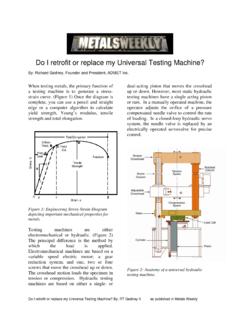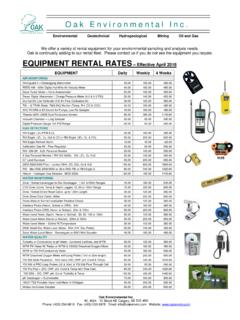Transcription of The “11+” - Home | YRSA
1 The 11+ . A complete warm-up programme to prevent injuries Manual The 11+ Manual A complete warm-up programme to prevent injuries Table of contents Preface 4. Introduction 5. Structure of the 11+ 6. BODY POSITION 7. Key elements of injury prevention 8. Motivation and Compliance 9. How to teach the 11+ 10. Progression to the next level 11. Field set-up 12. The 11+ exercises PART 1: RUNNING EXERCISES. 1 STRAIGHT AHEAD 16. 2 HIP OUT 18. 3 HIP IN 20. 4 CIRCLING PARTNER 22. 5 JUMPING WITH SHOULDER CONTACT 24. 6 QUICK FORWARDS AND BACKWARDS SPRINTS 26. PART 2: STRENGTH, PLYOMETRICS AND BALANCE EXERCISES.
2 THE BENCH STATIC 30. THE BENCH ALTERNATE LEGS 32. THE BENCH ONE LEG LIFT AND HOLD 34. 2. Table of content SIDEWAYS BENCH STATIC 36. SIDEWAYS BENCH RAISE AND LOWER HIP 38. SIDEWAYS BENCH WITH LEG LIFT 40. 9 HAMSTRINGS Beginner Intermediate Advanced 42. SINGLE-LEG STANCE HOLD THE BALL 44. SINGLE-LEG BALANCE THROWING BALL WITH PARTNER 46. SINGLE-LEG BALANCE TEST YOUR PARTNER 48. SQUATS WITH TOE RAISE 50. SQUATS WALKING LUNGES 52. SQUATS ONE-LEG SQUATS 54. JUMPING VERTICAL JUMPS 56. JUMPING LATERAL JUMPS 58. JUMPING BOX JUMPS 60. PART 3: RUNNING EXERCISES. 13 ACROSS THE PITCH 64. 14 Bounding 66.
3 15 PLANT AND CUT 68. Appendix: Frequently Asked Questions 70. Summary 72. 3. Preface Joseph S. Blatter Prof. Jiri Dvorak Physical exercise is the best preven- effect on the reduction of contact in- tive measure for many diseases this juries. Non-contact injuries can be best is a scientifically proven fact. Major prevented by thorough preparation. scientific studies have shown football With this in mind, FIFA and its Medi- to be an ideal sport to improve physi- cal Assessment and Research Centre, cal fitness as well as to provide social F-MARC, have developed an injury benefits due to it being a team game.
4 Prevention programme, the 11+ . Playing recreational and even competi- Major clinical research studies have tive football is a safe physical activity if clearly indicated that the consistent participating players are well prepared implementation of the 11+ can lead by regularly performing the 11+ . to a 30 50% reduction in injuries. In recent decades, football has gained On the basis of these results, FIFA. increasing popularity among men decided to roll this programme out and women, to such an extent that across the world and to use the 2010. there are currently about 300 million FIFA World Cup in South Africa to registered players, referees and techni- launch the programme within the cal staff, approximately 40 million of member associations.
5 Development whom are female football players. programmes are used to educate There is no doubt that football is the coaches, trainers, referees and techni- world's most popular sport, and the cal staff about the background and FIFA World Cup is the biggest sport- about how to perform the exercises ing event on the planet with the beau- correctly with their teams. A manual, tiful game not only filling stadiums but together with an instructional DVD. also pulling in 30 billion TV spectators. ( / medical), are the FIFA is aware not only of this develop- tools needed to facilitate the imple- ment but also of its responsibility to mentation all over the world, free of care for the health of players.
6 Football charge, for every football player. injuries can be incurred with and with- out contact with another player. The Joseph S. Blatter Laws of the Game and their appropri- FIFA President ate implementation through strict ref- Prof. Jiri Dvorak ereeing, fair play and the improvement FIFA Chief Medical Officer, F-MARC. of technical skills all have a positive chairman 4. Introduction Playing football requires various skills Injuries / 1,000 hours of exposure and abilities, including endurance, 10. agility, speed, and a technical and tactical understanding of the game. 8. All of these aspects will be taught and improved during training sessions, but playing football also entails a sub- 6.
7 Stantial risk of injury. Thus, an optimal training session should also include 4. exercises to reduce the risk of injury. 2. The 11+ is an injury prevention programme that was developed by an 0. international group of experts based on their practical experience with dif- training match ferent injury prevention programmes -37% -29%. for amateur players aged 14 or older. It is a complete warm-up package and usual warm up should replace the usual warm-up prior to training. 11+. (Instead of control / intervention: In a scientific study, it was shown that usual warm-up / the 11+ ). youth football teams using the 11+.
8 As a standard warm-up had a signifi- Teams that performed the 11+ . cant lower risk of injury than teams regularly at least twice a week had that warmed up as usual. 37% fewer training injuries and 29%. fewer match injuries. Severe injuries were reduced by almost 50%. This study was published in the British Medical Journal in 2008. 5. sTrucTure of The 11+ . The 11+ has three parts 11+ with a total of 15 exercises, which should be performed PART 1 RUNNING EXERCISES 8 MINUTES. 1. RUNNING. 2. RUNNING. 3. RUNNING. in the specified sequence STRAIGHT AHEAD HIP OUT HIP IN. at the start of each training session.
9 RUNNING RUNNING RUNNING. 4 5 6. CIRCLING PARTNER SHOULDER CONTACT QUICK FORWARDS. & BACKWARDS. PART 2 STRENGTH PLYOMETRICS BALANCE 10 MINUTES. LEVEL 1 LEVEL 2 LEVEL 3. Part 1: running exercises THE BENCH THE BENCH THE BENCH. at a slow speed combined 7 7 7. STATIC ALTERNATE LEGS ONE LEG LIFT. AND HOLD. 8. SIDEWAYS BENCH. STATIC. 8. SIDEWAYS BENCH. RAISE & LOWER HIP. 8. SIDEWAYS BENCH. WITH LEG LIFT. with active stretching and HAMSTRINGS HAMSTRINGS HAMSTRINGS. controlled partner contacts;. 9 9 9. BEGINNER INTERMEDIATE ADVANCED. 10. SINGLE-LEG STANCE. HOLD THE BALL. 10. SINGLE-LEG STANCE. THROWING BALL.
10 10. SINGLE-LEG STANCE. TEST YOUR PARTNER. Part 2: six sets of exercises focusing on core and leg WITH PARTNER. SQUATS SQUATS SQUATS. 11. WITH TOE RAISE. 11. WALKING LUNGES. 11. ONE-LEG SQUATS. strength, balance and plyo- 12. JUMPING. VERTICAL JUMPS. 12. JUMPING. LATERAL JUMPS. 12. JUMPING. BOX JUMPS. metrics/ agility, each with three levels of increasing PART 3 RUNNING EXERCISES 2 MINUTES. RUNNING RUNNING RUNNING. difficulty; and 13 14 15. ACROSS THE PITCH BOUNDING PLANT & CUT. Part 3: running exercises at moderate / high speed com- KNEE POSITION KNEE POSITION. CORRECT INCORRECT. bined with planting / cutting movements.




